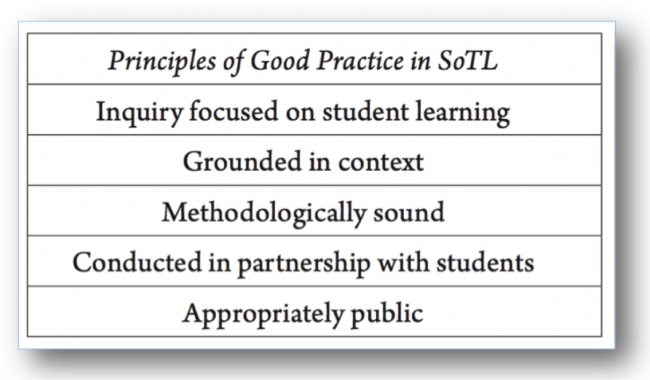While many SoTL theorists and practitioners have argued for a “big tent” that includes a wide range of approaches and forms (Huber & Hutchings, 2005, p. 30), this inclusiveness is balanced by a call for some basic standards of quality. Peter Felten’s “Principles of Good Practice” (2013) outlines some widely accepted benchmarks (see box below). 
Patricia O’Connell Killen and Eugene V. Gallagher’s “Sketching the Contours of the Scholarship of Teaching and Learning in Theology and Religion” (2013) outlines six types of SoTL articles and includes descriptions of “weaker examples” and “stronger examples” of each. While the six were developed by analyzing a specific journal in their field, Killen and Gallagher’s rubric can be extended and applied more broadly to assess the quality of other SoTL work, especially in conjunction with Felten’s “principles of good practice.”
For guidance on this stage of a SoTL project, see
“Considering Quality: Assessing Your Manuscript.”

